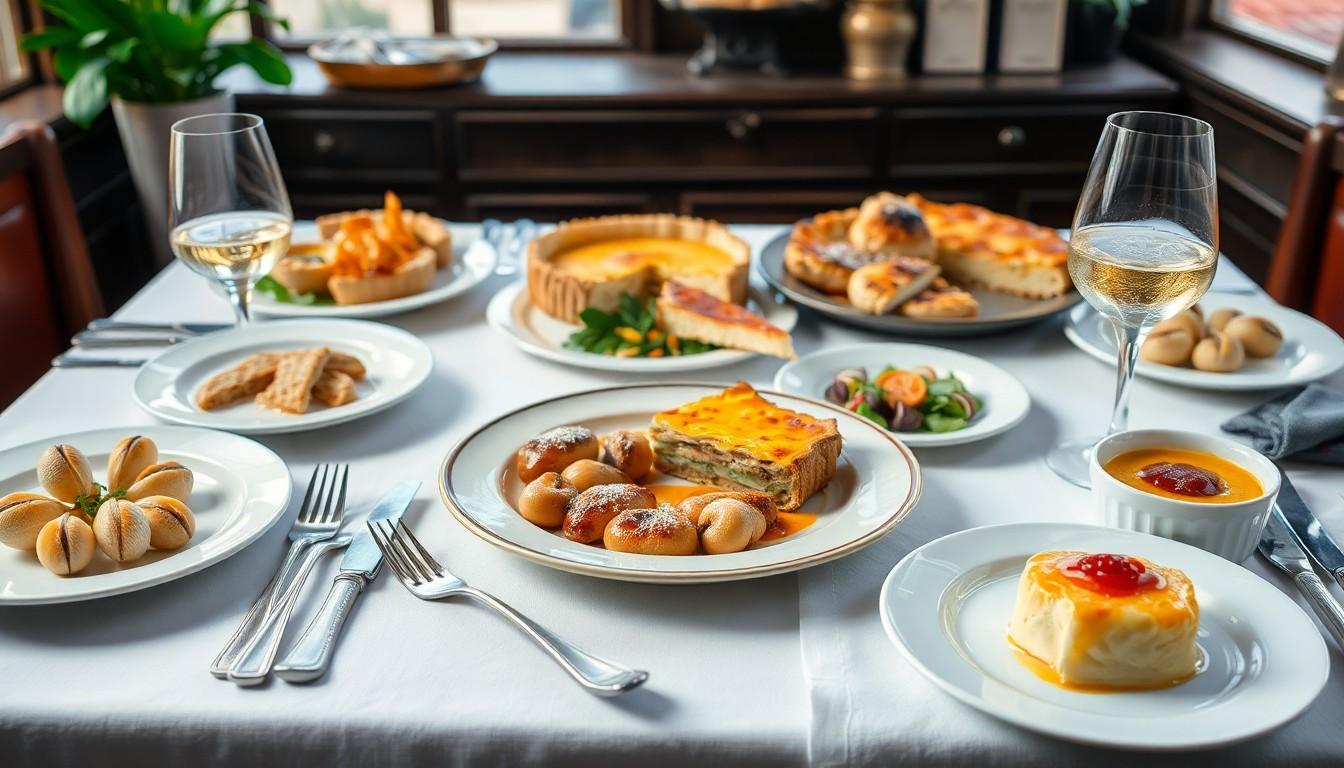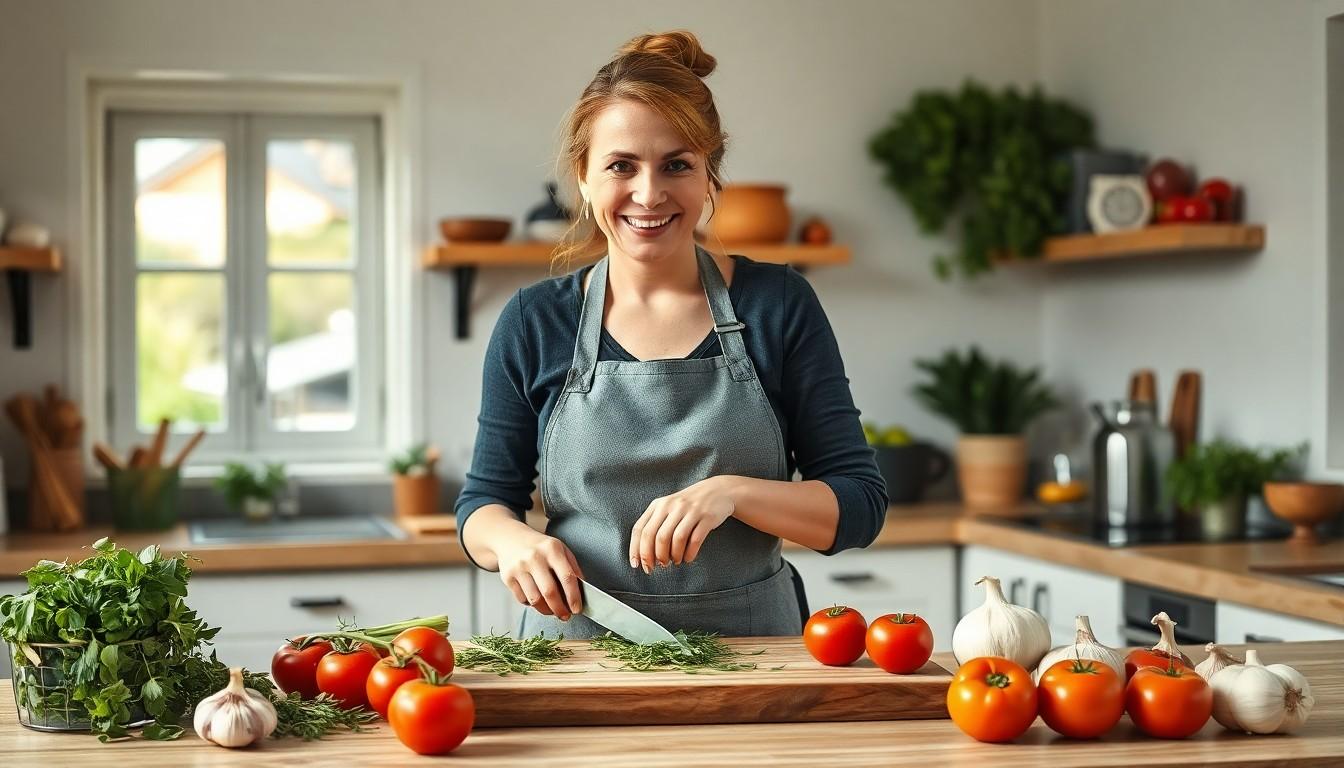French cooking isn’t just a style; it’s a delicious art form that transforms simple ingredients into culinary masterpieces. Imagine whipping up a coq au vin that makes your taste buds dance like they just won the lottery. With classic recipes and time-honored techniques, anyone can channel their inner chef and impress dinner guests—or at least make them wonder if they should be calling you “Le Cordon Bleu.”
French Cooking Classic Recipes and Techniques
French cooking showcases culinary artistry through methodical techniques and high-quality ingredients. Mastery of foundational skills, such as knife techniques and sauce preparation, paves the way for creativity in the kitchen. Essential recipes include classics like ratatouille and bouillabaisse, which highlight seasonal produce and rich flavors.
The significance of regional diversity in French cuisine cannot be overstated. Each region contributes unique ingredients and cooking styles, resulting in distinct dishes. For example, Provence favors herbs and olive oil, while Normandy highlights seafood and cream.
French cooking techniques play a vital role in achieving exceptional results. Techniques such as sautéing, braising, and poaching help unlock the full potential of ingredients. Understanding the principles behind cooking methods enables chefs to experiment while maintaining traditional flavors.
Combine skill with passion, and the art of French cooking becomes attainable. Engaging with classic recipes fosters appreciation for culinary heritage. Techniques like mise en place, or prepping ingredients before cooking, ensure efficiency and organization in the kitchen.
Classic French cooking emphasizes the importance of presentation. Attention to detail transforms a simple dish into a visual feast. Creating balance on a plate through color and texture enhances the overall dining experience.
Exploring French cuisine enriches culinary knowledge and inspires creativity. Armed with classic recipes and techniques, home cooks confidently impress guests with remarkable meals. Delving into the world of French cooking elevates everyday dining into an unforgettable experience.
Essential Classic Recipes
French cuisine features an array of classic recipes that highlight its rich flavors and techniques. Exploring these recipes enhances culinary skills while showcasing traditional French gastronomy.
Appetizers
Popular French appetizers include
escargots de Bourgogne, a dish featuring tender snails cooked in garlic butter. Another favorite,
quiche Lorraine, combines eggs with cream and bacon in a flaky pastry crust, providing a savory start to any meal.
Tarte Tatin, a caramelized upside-down apple tart, serves as a delightful beginning or light snack. For a refreshing option, try
salade niçoise, which blends fresh vegetables with tuna, eggs, and olives, offering a taste of the Mediterranean.
Main Courses
Classics like
coq au vin stand out for their robust flavors, featuring chicken braised in red wine with mushrooms and lardons.
Boeuf bourguignon showcases tender beef slow-cooked in a rich Burgundy sauce, alongside carrots and onions.
Ratatouille highlights seasonal vegetables cooked with herbs, embodying the essence of Provence.
Cassoulet, a hearty casserole with beans, meats, and sausages, provides comfort and warmth, perfect for gatherings.
Desserts
Dessert options showcase the sweetness of French cooking.
Crème brûlée delights with its creamy custard base and a crisp caramelized sugar top, creating an elegant finish to any meal.
Tart au citron, a lemon tart, balances tangy citrus with a buttery crust, enticing dessert lovers. Profiteroles, filled with cream and drizzled in chocolate, offer a delightful bite-sized treat. Lastly, a classic
French chocolate mousse combines dark chocolate and whipped cream, delivering rich, velvety indulgence.
Key Cooking Techniques
French cooking techniques form the backbone of its culinary elegance. Mastering these methods enables chefs to elevate their dishes significantly.
Sous Vide Cooking
Sous vide cooking involves vacuum-sealing food in bags and immersing them in water at precise temperatures. This technique preserves flavor and moisture, ensuring perfectly cooked meats and vegetables. Chefs appreciate sous vide for its consistency, as it eliminates the risk of overcooking. It often takes several hours, allowing flavors to develop deeply during the cooking process. Many classic French dishes benefit from this method, creating tender outcomes that impress diners.
Confit Techniques
Confit techniques require slow cooking ingredients in fat over low heat, which enhances texture and flavor. Duck confit transforms tough duck legs into tender, rich delicacies through this process. The fat acts as a preservative, extending the dish’s shelf life. Chefs often use confit to add depth to various recipes, including vegetables such as garlic or tomatoes. This technique showcases the beauty of slow cooking, capturing the essence of traditional French cuisine.
Sauces and Stocks
Sauces and stocks serve as the foundation of French cuisine, adding richness and depth to dishes. A well-made stock can elevate a simple soup to culinary greatness. Techniques for stocks involve simmering bones, vegetables, and herbs for hours to extract maximum flavor. Classic sauces like béchamel or hollandaise emerge from these stocks, transforming ordinary meals into memorable ones. Mastering these techniques is essential for any aspiring chef, as they unlock a world of flavor possibilities in French cooking.
Ingredients in French Cooking
French cuisine thrives on high-quality ingredients that enhance flavors and elevate dishes. Each component plays a crucial role in creating authentic experiences.
Herbs and Spices
Herbs and spices serve as essential flavor boosters in French cooking. Fresh herbs such as thyme, parsley, and tarragon regularly feature in classic recipes. Dried herbs add depth, particularly herbes de Provence, which combines savory, rosemary, and basil. Seasoning with sea salt and freshly ground pepper can elevate a dish, allowing the natural flavors to shine. Saffron, though more expensive, infuses unique taste and color into dishes like bouillabaisse. Understanding which herbs and spices complement specific ingredients helps achieve culinary mastery.
Dairy and Cream
Dairy and cream form the backbone of many French sauces and dishes. Butter, often used for sautéing and baking, provides richness and flavor. Heavy cream creates luxurious textures in sauces and desserts, such as crème fraîche or mousse. Cheese, like Gruyère and Roquefort, adds distinctive tastes and enhances recipes. Incorporating milk in soups and custards ensures a creamy consistency and depth. Utilizing high-quality, local dairy products contributes to the overall excellence of French cuisine.
French Cooking
Exploring French cooking opens a world of flavors and techniques that can transform any meal into a culinary masterpiece. By mastering classic recipes and honing essential skills, home cooks can create dishes that not only taste incredible but also showcase their creativity.
The beauty of French cuisine lies in its ability to elevate simple ingredients through thoughtful preparation and presentation. As cooks embrace the diversity of regional influences and seasonal produce, they’ll discover a rich tapestry of flavors waiting to be explored.
Whether it’s perfecting a sauce or crafting a stunning dessert, the journey through French cooking invites everyone to appreciate the artistry behind each dish. With practice and passion, anyone can bring a touch of French elegance to their kitchen.

